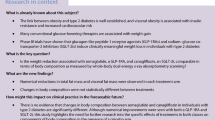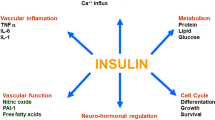Abstract
To investigate the relationships between the GH-IGF-I axis and the atherosclerotic profile, we designed this open, observational, prospective study. Peak GH after GHRH+arginine (ARG) test, serum IGF-I and IGF binding protein-3 (IGFBP-3), lipid profile, homeostasis model assessment (HOMA) index and intima-media thickness (IMT) at common carotid arteries were measured in 174 healthy individuals (92 women, 82 men, aged 18–80 yr). Exclusion criteria for this study were: 1) body mass index (BMI) ≥30 kg/m2; 2) personal history of cardiovascular diseases; 3) previous or current treatments of diabetes or hypertension; 4) previous corticosteroids treatment for longer than 2 weeks or estrogens for longer than 3 months; 5) smoking of more than 15 cigarettes/day and alcohol abuse. Subjects were divided according to age in decade groups from <20 to >70 yr. BMI increased with age, as did systolic and diastolic blood pressures, although they remained in the normal range. The GH peak after GHRH+ARG test was significantly higher in the subjects aged <20 yr than in all the other groups (p<0.01), but was similar in the remaining groups. An inverse correlation was found between the IGF-I z-score and total/HDL-cholesterol ratio (p=0.02) and mean IMT (p=0.0009); IGFBP-3 z-score and mean IMT (p=0.043); IGF: IGFBP-3 molar ratio and total/HDL-cholesterol ratio (p<0.0001) and mean IMT (p<0.0001). Atherosclerotic plaques were found in 7 out of 12 subjects (53.8%) with a z-IGF-I score from ≤−2 to −1, in 4 out of 63 (6.3%) with a z-IGF-I score from −0.99 to 0.1 out of 66 (1.5%) with a z-IGF-I score from 0.1 to 1 and none of the 33 subjects with an IGF-I z-score >1 (p=0.006). At multi-step regression analysis, age was the best predictor of HDL-cholesterol levels and mean IMT, IGF-I level was the best predictor of total cholesterol and total/HDL-cholesterol ratio, the IGF-I/IGFBP-3 molar ratio was the best predictor of triglycerides levels. The z-scores of IGF-I and IGFBP-3 were the second best predictors of mean IMT after age. In conclusion, IGF-I and IGFBP-3 were negatively correlated with common cardiovascular risk factors, studied as total/HDL-cholesterol ratio, and/or early atherosclerosis, studied as IMT at common carotid arteries. The prevalence of atherosclerotic plaques, though not hemodinamically significant, was higher in the subjects having a z-score of IGF-I of ≤−2 to −1. Our results support a role of the IGF/IGFBP-3 axis in the pathogenesis of atherosclerosis.
Similar content being viewed by others
References
Bayes-Genis A, Conover CA, Schwartz RS. The insulin-like growth factor axis. A review of atherosclerosis and restenosis. Circ Res 2000, 86: 125–30.
Delafontaine P. Insulin-like growth factor I and its binding proteins in the cardiovascular system. Cardiovasc Res 1995, 30: 825–34.
Fernas GAA, Morani AS, Anggard EE. The insulin-like growth factors: their putative role in atherogenesis. Artery 1991, 18: 197–225.
Markussis V, Beshyah SA, Fisher C, Sharp P, Nicholaides AN, Johnston D. Detection of premature atherosclerosis by high resolution ultrasonography in symptom free hypopituitary adults. Lancet 1992, 340: 1188–92.
Capaldo B, Patti L, Oliviero U, et al. Increased arterial intima-media thickness in childhood-onset growth hormone deficiency. J Clin Endocrinol Metab 1997, 82: 1378–81.
Borson-Chazot F, Serusclat A, Kalfallah Y, et al. Decrease in carotid intima-media thickness after 1 year growth hormone (GH) treatment in adults with GH deficiency. J Clin Endocrinol Metab 1999, 84: 1329–33.
Pfeifer M, Verhovec R, Zizek B, Prezelj J, Poredos P, Clayton RN. Growth hormone treatment (GH) reverses early atherosclerotic changes in GH-deficient adults. J Clin Endocrinol Metab 1999, 84: 453–7.
Murata M, Kaji H, Mizuno I, et al. A study of carotid intima-media thickness in GH-deficient Japanese adults during onset among adults and children. Eur J Endocrinol 2003, 148: 333–8.
Leonsson M, Hulthe J, Oscarsson J, et al. Intima-media thickness in cardiovascularly asymptomatic hypopituitary adults with growth hormone deficiency: relation to body mass index, gender, and other cardiovascular risk factors. Clin Endocrinol (Oxf) 2002, 57: 751–9.
Colao A, Di Somma C, Filippella M, et al. Insulin-like growth factor-I deficiency determines increased intima-media thickness at common carotid arteries in adult patients with growth hormone deficiency. Clin Endocrinol (Oxf) 2004, 61: 360–6.
Colao A, Spiezia S, Cerbone G, et al. Increased arterial intima-media thickness by B-M mode echodoppler ultrasonography in acromegaly. Clin Endocrinol (Oxf) 2001, 54: 515–24.
Kasayama S, Otsuki M, Takagi M, et al. Characterization of premature atherosclerosis of carotid arteries in acromegalic patients. Clin Endocrinol (Oxf) 2001, 54: 791–6.
Colao A, Marzullo P, Lombardi G, the Multicenter Italian Study Group on Lanreotide. Effect of a six-month treatment with lanreotide on cardiovascular risk factors and arterial intima-media thickness in patients with acromegaly. Eur J Endocrinol 2002, 146: 303–9.
Colao A, Spinelli L, Cuocolo A, et al. Cardiovascular consequences of early-onset growth hormone excess. J Clin Endocrinol Metab 2002, 87: 3097–104.
Maison P, Demolis P, Young J, Schaison G, Giudicelli JF, Chanson P. Vascular reactivity in acromegalic patients: preliminary evidence for regional endothelial dysfunction and increased sympathetic vasoconstriction. Clin Endocrinol (Oxf) 2000, 53: 445–51.
Brevetti G, Marzullo P, Silvestro A, et al. Early vascular alterations in acromegaly. J Clin Endocrinol Metab 2002, 87: 3174–9.
Evans LM, Davies JS, Anderson RA, et al. The effect of GH replacement therapy on endothelial function and oxidative stress in adult growth hormone deficiency. Eur J Endocrinol 2000, 142: 254–62.
Juul A, Scheike T, Davidsen M, Gyllenborg J, Jorgensen T. Low serum insulin-like growth factor I is associated with increased risk of ischemic heart disease: a population-based case-control study. Circulation 2002, 106: 939–44.
Vasan RS, Sullivan LM, D’Agostino RB, et al. Serum insulin-like growth factor I and risk for heart failure in elderly individuals without a previous myocardial infarction: the Framingham Heart Study. Ann Intern Med 2003, 139: 642–8.
Laughlin GA, Barrett-Connor E, Criqui MH, Kritz-Silverstein D. The prospective association of serum insulin-like growth factor I (IGF-I) and IGF-binding protein-1 levels with all cause and cardiovascular disease mortality in older adults: the Rancho Bernardo Study. J Clin Endocrinol Metab 2004, 89: 114–20.
Aimaretti G, Corneli G, Razzore P, et al. Comparison between insulin-induced hypoglycemia and growth hormone (GH)-releasing hormone + arginine as provocative tests for the diagnosis of GH deficiency in adults. J Clin Endocrinol Metab 1998, 83: 1615–8.
Castelli WP. Lipid, risk factors and ischaemic heart disease. Atherosclerosis 1996, 124 (Suppl): S1–9.
Hypertension control. Report of a WHO expert committee. WHO Tech Rep Ser 1996, 862: 1–83.
Consensus Conference: treatment of hypertriglyceridemia. JAMA 1984, 251: 1196–200.
The Expert Panel: Report of the National Cholesterol Education Program expert panel on detection, evaluation and treatment of high blood cholesterol in adults. Arch Intern Med 1988, 148: 36–9.
Matthews DR, Hosker JP, Rudenski AS, Naylor BA, Treacher DF, Turner RC. Homeostasis model assessment: insulin resistance and β-cell function from fasting plasma glucose and insulin concentrations in man. Diabetologia 1985, 28: 412–9.
Belcaro G, Laurora G, Cesarone MR. Noninvasive ultrasonic biopsy: evaluation of early arteriosclerotic lesions progression in normal asymptomatic, hyperlipidemic and diabetic subjects. Angiology 1993, 44: 93–9.
Oscarsson J, Johannsson G, Johansson JO, Lundberg PA, Lindstedt G, Bengtsson BA. Diurnal variation in serum insulin-like growth factor (IGF)-I and IGF binding protein-3 concentrations during daily subcutaneous injections of recombinant human growth hormone in GH-deficient adults. Clin Endocrinol (Oxf) 1997, 46: 63–8.
Fischer F, Schulte H, Mohan S, et al. Associations of insulin-like growth factors, insulin-like growth factor binding proteins and acid-labile subunit with coronary heart disease. Clin Endocrinol (Oxf) 2004, 61: 595–602.
Ruotolo G, Bavenholm P, Brismar K, et al. Serum insulin-like growth factor-I level is independently associated with coronary artery disease progression in young male survivors of myocardial infarction: beneficial effects of bezafibrate treatment. J Am Coll Cardiol 2000, 35: 647–54.
Spallarossa P, Brunelli C, Minuto F, et al. Insulin-like growth factor 1 and angiographically documented coronary artery disease. Am J Cardiol 1996, 336: 200–2.
Janssen JAMJL, Stolk RP, Pols HAP, Grobee DE, Lamberts SWJ. Serum total IGF-I, free IGF-I, and IGFBP-1 levels in an elderly population: relation to cardiovascular risk factors and disease. Arterioscl Thromb Vasc Biol 1998, 18: 277–82.
Cleland SJ, Petrie JR, Ueda S, Elliott HL, Connell JMC. Mechanisms and pathophysiological significance of insulin’s vascular action. Curr Opin Endocrinol Diab 1998, 5: 217–22.
Attia N, Tamborlane WV, Heptulla R, et al. The metabolic syndrome and insulin-like growth factor I regulation in adolescent obesity. J Clin Endocrinol Metab 1998, 83: 1467–71.
Ghigo E, Goffi S, Nicolosi M, et al. 1990 Growth hormone (GH) responsiveness to combined administration of arginine and GH-releasing hormone does not vary with age in man. J Clin Endocrinol Metab 71: 1481–5.
Böger RH, Skamira C, Bode-Böger SM, Brabant C, von Zur Muhlen A, Frolich JC. Nitric oxide mediates the hemody-namic effects of recombinant growth hormone in patients with acquired growth hormone deficiency. J Clin Invest 1996, 98: 2706–13.
Rosen T, Bengtsson B-A. Premature mortality due to car diovascular disease in hypopituitarism. Lancet 1990, 336: 285–8.
Bülow B, Hagmar L, Mikoczy Z, Nordstroem CH, Erfurth EM. Increased cerebrovascular mortality in patients with hypopituitarism. Clin Endocrinol (Oxf) 1997, 46: 75–81.
Bates AS, van’t Hoff W, Jones PJ, Clayton RN. The effect of hypopituitarism on life expectancy. J Clin Endocrinol Metab 1996, 81: 1169–72.
Tomlinson JW, Holden N, Hills R, et al. Premature mortality in 1014 patients with hypopituitarism. Lancet 2001, 357: 425–31.
Frystyk J, Ledet T, Moller N, Flyvbjerg A, Orskov H. Cardiovascular disease and insulin-like growth factor I. Circulation 2002, 106: 893–5.
Author information
Authors and Affiliations
Corresponding author
Rights and permissions
About this article
Cite this article
Colao, A., Spiezia, S., Di Somma, C. et al. Circulating insulin-like growth factor-I levels are correlated with the atherosclerotic profile in healthy subjects independently of age. J Endocrinol Invest 28, 440–448 (2005). https://doi.org/10.1007/BF03347225
Accepted:
Published:
Issue Date:
DOI: https://doi.org/10.1007/BF03347225




